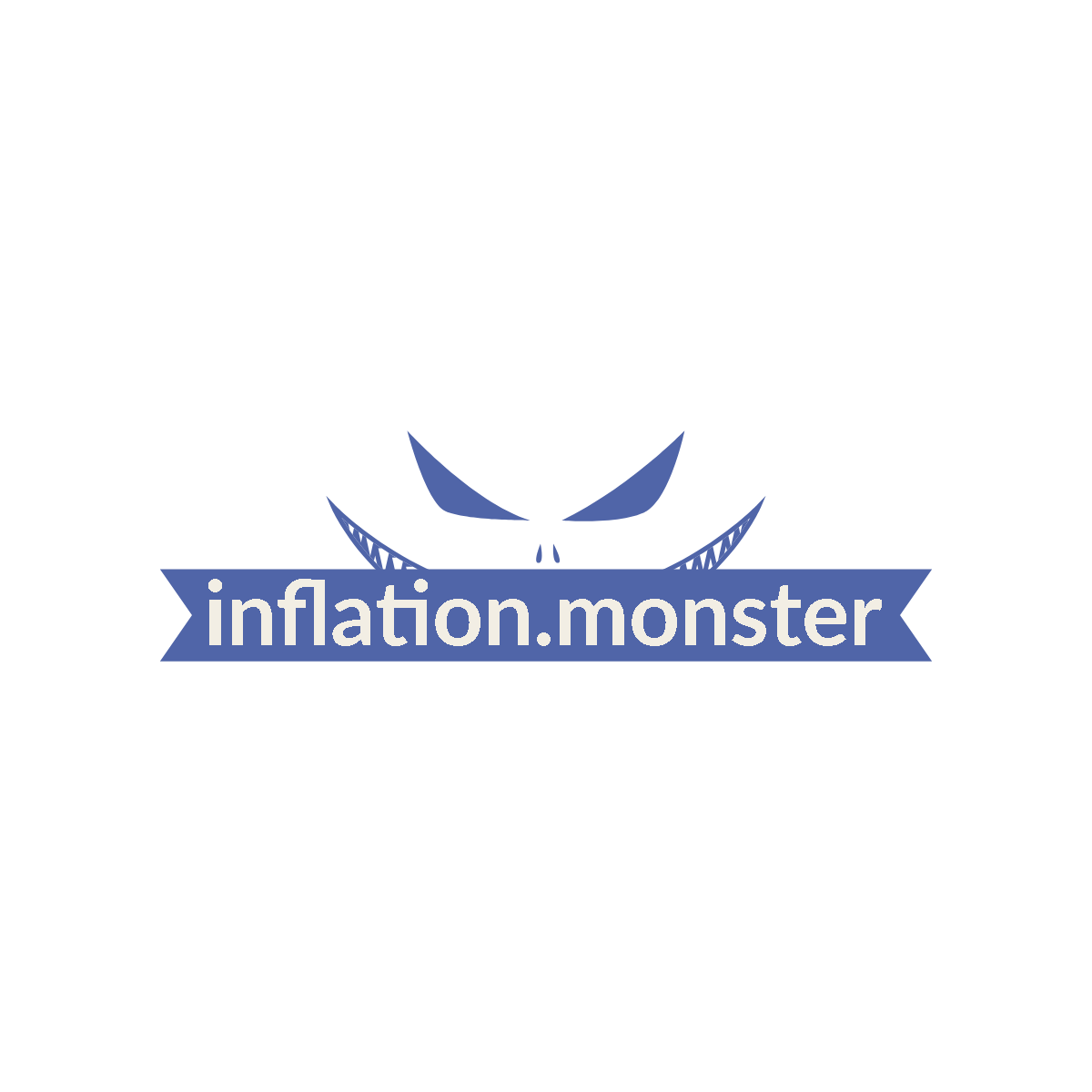In our quest to unravel the mysteries of the inflation monster, we turn our attention to an equally captivating topic: the impact of inflation on consumer behavior. As prices rise and purchasing power diminishes, consumers are forced to make tough choices and adjust their spending habits. From seeking out alternative products to tightening their belts, our journey will explore the ways in which inflation shapes the decisions we make as consumers. Join us as we delve into the fascinating world where money, economics, and consumer behavior intersect. Hold on tight, for this is a ride you won’t want to miss!
Overview of Inflation
Inflation is an important economic concept that affects economies around the world and has a significant impact on consumer behavior. It refers to the sustained increase in the general price level of goods and services in an economy over a period of time. The causes of inflation can vary, but the end result is a decrease in the purchasing power of money. Understanding inflation, its measurement, and its effects on consumer behavior is crucial for individuals, businesses, and policymakers.
Measurement and Types of Inflation
Consumer Price Index (CPI)
The Consumer Price Index (CPI) is one of the key measures used to track inflation. It measures the average change over time in the prices paid by urban consumers for a basket of goods and services. The CPI takes into account a wide range of consumer goods and services, including food, housing, transportation, and healthcare. By tracking changes in the CPI, economists can gauge the rate of inflation and its impact on consumers’ cost of living.
Producer Price Index (PPI)
The Producer Price Index (PPI) is another important measure of inflation. Unlike the CPI, which tracks changes in consumer prices, the PPI tracks changes in the prices received by producers of goods and services. It measures price changes at the wholesale level and provides insights into inflationary pressures throughout the supply chain. By monitoring the PPI, policymakers and businesses can anticipate changes in consumer prices and adjust their strategies accordingly.
Types of Inflation
Inflation can take different forms, depending on the underlying causes. The four main types of inflation are demand-pull inflation, cost-push inflation, built-in inflation, and imported inflation.
-
Demand-Pull Inflation occurs when there is excess demand for goods and services, leading to an increase in prices. This can happen when there is strong economic growth, low unemployment, or expansionary monetary policies.
-
Cost-Push Inflation occurs when production costs rise, leading to higher prices for consumers. Factors such as increases in wages, raw material prices, or taxes can contribute to cost-push inflation.
-
Built-in Inflation refers to the expectation that prices will rise in the future, leading to higher wages and increasing production costs. This expectation can become self-fulfilling and contribute to a continuous cycle of rising prices.
-
Imported Inflation happens when the prices of imported goods and services increase. Factors such as changes in exchange rates, tariffs, or global supply chain disruptions can lead to imported inflation.
Understanding the different types of inflation is essential for policymakers and businesses to develop strategies to manage and mitigate its effects on consumers.

Factors Causing Inflation
Inflation is driven by various factors, each having a different impact on the overall price level in the economy. Let’s explore some of the main factors causing inflation.
Demand-Pull Inflation
Demand-pull inflation occurs when consumer demand exceeds the supply of goods and services available in the market. This imbalance causes prices to rise due to increased competition among consumers to purchase limited quantities of goods and services. Factors that contribute to demand-pull inflation include strong economic growth, low unemployment rates, and expansionary monetary policies such as increased government spending or low interest rates.
Cost-Push Inflation
Cost-push inflation occurs when the cost of production increases for businesses, leading them to pass on these costs to consumers in the form of higher prices. This type of inflation can be caused by various factors such as increases in wages, raw material prices, energy costs, or taxes. When businesses face higher costs, they may reduce their profit margins or raise prices to maintain profitability, thereby causing inflation.
Built-in Inflation
Built-in inflation refers to the expectation that prices will rise in the future, leading to higher wages and increasing production costs. This expectation becomes self-fulfilling as both workers and businesses adjust their behavior based on the anticipation of future price increases. For example, workers may demand higher wages to compensate for the expected rise in the cost of living, while businesses may increase prices to cover higher labor costs. This cycle of rising wages and prices can perpetuate inflationary pressures.
Imported Inflation
Imported inflation occurs when the prices of imported goods and services increase due to factors such as changes in exchange rates, tariffs, or global supply chain disruptions. When the value of a country’s currency declines against other currencies, it makes imported goods more expensive for consumers. Similarly, the imposition of tariffs or trade barriers can increase the prices of imported goods. These factors can contribute to inflationary pressures in an economy, affecting the overall price level.
Understanding the factors causing inflation helps policymakers and businesses devise appropriate strategies to manage and control its impact on consumers.
Inflation Trends and Consumer Behavior
Inflation can have a significant impact on consumer behavior, influencing individuals’ purchasing power, savings patterns, and borrowing habits. Let’s delve into how inflation trends affect consumer behavior.
Price Perception and Expectations
Inflation can influence consumers’ perceptions of price changes and their expectations for the future. When inflation is high or accelerating, consumers may become more price-conscious, seeking discounts, and comparing prices more extensively. Higher inflation rates can lead to a greater emphasis on value for money and a preference for lower-priced goods and services. Conversely, during periods of low or stable inflation, consumers may pay less attention to price changes and focus more on other factors such as convenience or quality.
Purchasing Power and Disposable Income
Inflation erodes the purchasing power of money, as the same amount of currency can buy fewer goods and services over time. This decrease in purchasing power can have varying impacts on different consumer segments. For low-income consumers, who often have limited financial resources, inflation can significantly reduce their ability to afford basic necessities. Middle-income consumers may also feel the squeeze as their purchasing power decreases and they struggle to maintain their desired standard of living. High-income consumers, on the other hand, may be less affected by inflation as they have more disposable income and a greater ability to absorb price increases.
Savings and Investment
Inflation can impact individuals’ decisions regarding savings and investment. When prices are rising, the value of money held in savings accounts or other low-interest financial instruments may be eroded over time. To preserve their wealth and counter the effects of inflation, individuals may choose to invest in assets that have the potential to outpace inflation, such as equities, real estate, or commodities. However, it’s important to note that investment decisions carry their own risks and are subject to market fluctuations.
Consumer Debt and Borrowing Habits
Inflation can affect consumers’ attitudes towards debt and borrowing. During times of high inflation, borrowing becomes relatively cheaper as the real value of debt decreases over time. This can incentivize consumers to take on more debt in order to fund purchases or investments. Conversely, when inflation is low, consumers may be more cautious about accumulating debt, as the real cost of borrowing remains relatively high.
Understanding consumers’ responses to inflation trends is crucial for businesses and policymakers in designing appropriate strategies and policies that respond to changing consumer behavior.

Effects of Inflation on Different Consumer Segments
Inflation affects consumer segments differently, with varying impacts on low-income consumers, middle-income consumers, high-income consumers, senior citizens, and businesses.
Low-Income Consumers
Low-income consumers are particularly vulnerable to the effects of inflation. They often have limited financial resources, making it difficult to cope with rising prices. Basic necessities such as food, housing, and healthcare form a larger proportion of their budget, and any increase in prices can have a significant impact on their ability to afford these essential goods and services. As a result, low-income consumers may be forced to cut back on discretionary spending or rely on assistance programs to meet their basic needs during periods of high inflation.
Middle-Income Consumers
Middle-income consumers are also impacted by inflation, although they may have more financial resilience compared to low-income consumers. As prices rise, middle-income consumers may face challenges in maintaining their desired standard of living and may need to adjust their spending patterns. They may cut back on discretionary purchases, postpone large-ticket items, or seek out alternative products or services that offer better value for money. Middle-income consumers with mortgage or loan payments can also be affected by rising interest rates resulting from inflation, as their monthly payments may increase.
High-Income Consumers
High-income consumers typically have more disposable income and a greater ability to absorb the impact of inflation. While price increases can affect their purchasing power to some extent, high-income consumers may be less likely to alter their spending habits significantly. They have a wider range of financial resources at their disposal, enabling them to maintain their desired lifestyle even during periods of higher inflation. However, it’s important to note that high-income consumers are not immune to inflation, and they may still make adjustments to their spending habits based on changing price levels.
Senior Citizens
Senior citizens, particularly those living on fixed incomes such as pensions or retirement savings, can be particularly vulnerable to the effects of inflation. As the cost of living increases, the purchasing power of their fixed income decreases. This can make it challenging for them to cover rising expenses, especially healthcare and other essential costs. Senior citizens may need to carefully manage their finances, explore cost-saving measures, and rely on government programs or community support to meet their needs during inflationary periods.
Businesses and Entrepreneurs
Inflation can have significant implications for businesses and entrepreneurs. Rising production costs, driven by factors such as higher wages or raw material prices, can reduce profit margins and erode competitiveness. Businesses may be forced to increase prices to maintain profitability, but this can have a negative impact on consumer demand. Entrepreneurs, especially those in early stages of business development, may face challenges in securing financing and managing cash flows during periods of high inflation. Economic uncertainty caused by inflation can also affect business confidence and investment decisions.
Understanding how different consumer segments are affected by inflation is crucial for policymakers to develop targeted policies and for businesses to adapt their strategies and offerings to meet changing consumer needs.
Price Elasticity and Consumer Response to Inflation
Price elasticity is a concept that measures how sensitive consumer demand is to changes in price. Understanding price elasticity is crucial for businesses as it helps them determine how changes in prices will impact sales and revenue. In the context of inflation, price elasticity can vary across different goods and services.
Some goods or services are considered price inelastic, meaning that changes in price have a relatively small impact on consumer demand. These goods are often necessities or have limited substitutes, such as food, healthcare, or utilities. Consumers are likely to continue purchasing these items even if prices rise, as they are deemed essential for daily life. Price inelastic goods may also exhibit inelastic demand due to habit, brand loyalty, or the lack of readily available alternatives.
On the other hand, some goods and services are considered price elastic, as changes in price have a significant impact on consumer demand. These goods are usually non-essential or have readily available substitutes, such as luxury goods, recreational activities, or certain consumer electronics. When prices for price elastic goods rise, consumers are more likely to reduce their purchases or switch to cheaper alternatives.
Understanding the price elasticity of goods and services in the context of inflation helps businesses anticipate how consumer demand will be affected and adjust their pricing strategies accordingly. It also helps policymakers assess the potential impact of inflation on different sectors of the economy and implement measures to mitigate any adverse effects.

Inflation’s Impact on Consumer Spending
Inflation has a significant impact on consumer spending patterns, influencing both the quantity and quality of goods and services purchased. Let’s explore how inflation affects consumer spending.
Changes in Buying Patterns
Inflation can lead to changes in consumer buying patterns, as individuals adjust their spending habits in response to rising prices. As prices increase, consumers may opt to reduce discretionary spending or delay purchases of non-essential items. They may also become more price-conscious and seek out products or services that offer better value for money. For example, consumers may switch to lower-priced brands, purchase products in bulk to take advantage of discounts, or seek out sales and promotions. These changes in buying patterns can have ripple effects across industries, influencing pricing strategies and product offerings.
Substitution Effects
When faced with higher prices for a particular good or service, consumers may choose to substitute it with a cheaper alternative. For example, if the price of beef increases, consumers may switch to chicken or other lower-priced meats. Similarly, if the price of a specific brand of clothing becomes too expensive, consumers may opt for a more affordable alternative. This substitution effect can driven by both price and availability considerations and can impact the demand for different goods and services within the economy.
Impact on Essential and Non-essential Goods
Inflation can affect consumer spending on both essential and non-essential goods. When the prices of essential goods, such as food, housing, or healthcare, rise, consumers may find it difficult to cut back on these expenses. They may have to prioritize these essential items over non-essential goods, potentially reducing their spending on discretionary purchases such as entertainment, travel, or luxury items. Businesses operating in sectors that offer non-essential goods or services may experience a decline in demand as consumers redirect their spending towards essential goods.
Stimulating Consumer Behavior
Inflation can also stimulate consumer behavior in specific situations. For example, when consumers anticipate future price increases, they may be motivated to make purchases sooner rather than later to avoid higher prices. This behavior can create temporary surges in demand for certain goods or services, leading to increased sales and revenues for businesses. However, once this pent-up demand is satisfied, consumer spending may decline, leading to a period of slower economic growth.
Understanding the impact of inflation on consumer spending is crucial for businesses and policymakers in adapting their strategies and policies to meet changing consumer needs and preferences.
Inflation and the Housing Market
Inflation can have significant implications for the housing market, impacting mortgage rates, affordability, housing demand, rental markets, and homeownership rates.
Mortgage Rates and Affordability
Inflation can influence mortgage rates, which in turn affects housing affordability. When inflation increases, central banks may raise interest rates to curb inflationary pressures. These increased interest rates can lead to higher mortgage rates, making borrowing more expensive for homebuyers. As mortgage rates rise, the cost of homeownership increases and affordability decreases. This can affect both first-time homebuyers and existing homeowners looking to refinance or upgrade their homes.
Housing Demand and Rental Market
Inflation can also impact housing demand and the rental market. During periods of high inflation, potential homebuyers may choose to postpone purchasing a home due to affordability concerns. This can increase demand for rental properties as individuals opt for renting instead of buying. Rising rents due to increased demand can put additional pressure on individuals who are already financially constrained. Conversely, during periods of low or stable inflation, buyers may be more confident in making home purchases, leading to increased demand for homes and a potentially more competitive housing market.
Impact on Homeownership Rates
Inflation can influence homeownership rates, as individuals’ ability to save for down payments and meet mortgage requirements can be affected. During periods of high inflation, the cost of living increases, making it harder for individuals to set aside savings for a down payment. Additionally, increased interest rates resulting from inflation can make mortgage loans more expensive and harder to obtain. As a result, homeownership rates may decline, particularly among lower-income households and first-time homebuyers.
Understanding the impact of inflation on the housing market helps policymakers and individuals anticipate changes in affordability, demand, and homeownership rates. It also assists businesses in adjusting their strategies and offerings to meet the evolving needs of buyers and renters.
Inflation and Income Distribution
Inflation can have significant implications for income distribution, as it can impact the wealth gap, income disparity, and poverty rates within a society.
Wealth Gap and Income Disparity
Inflation can exacerbate the wealth gap and income disparity in a society. When prices rise, individuals with higher incomes may be better able to absorb the impact of inflation, as they have more disposable income and a greater ability to adapt their spending habits. However, low-income individuals and households, who often have limited financial resources, may struggle to cope with rising prices. This can widen the wealth gap, as those with higher incomes maintain or even increase their purchasing power, while those with lower incomes experience a decline in their standard of living.
Inflation and Poverty Rates
Inflation can impact poverty rates within a society. When prices rise, individuals and households near or below the poverty line may be pushed further into financial hardship. The increased cost of basic necessities, such as food, housing, and healthcare, can consume a larger proportion of their income, leaving them with little to cover other essential and discretionary expenses. Inflation can therefore be a contributing factor to higher poverty rates, particularly if individuals’ incomes do not keep pace with rising prices.
Impact on Social Welfare Programs
Inflation can also affect the effectiveness of social welfare programs designed to support low-income individuals and households. As the cost of living increases, the resources allocated to social welfare programs may become insufficient to meet the changing needs of those in need. This can lead to increased demand for social assistance, putting additional strain on government budgets and resources. Inflation and its impact on income distribution therefore have implications for policymakers in terms of designing effective social welfare programs and income redistribution strategies.
Understanding the relationship between inflation and income distribution is crucial for policymakers to develop targeted policies that address income inequality and mitigate the negative effects of inflation on vulnerable populations.
Managing Inflation Risk: Strategies for Consumers
Consumers can take various steps to manage the risks associated with inflation and protect their financial well-being. Here are some strategies for individuals to consider:
Budgeting and Financial Planning
Creating and maintaining a budget is an essential tool for managing the impact of inflation on personal finances. By tracking income and expenses, individuals can identify areas where spending can be reduced or adjusted. Budgeting also helps prioritize essential expenses and allocate resources strategically. Setting financial goals and regularly reviewing and adjusting the budget can help individuals navigate changing economic conditions and adapt to inflationary pressures.
Investment Diversification
Investment diversification is a strategy for individuals to mitigate the impact of inflation on their savings. By spreading investments across different asset classes such as stocks, bonds, real estate, and commodities, individuals can reduce their exposure to inflation-related risks. Some asset classes, such as equities or real estate, have historically provided returns that have outpaced inflation. However, it’s important to remember that all investments carry risks, and individuals should consider their risk tolerance and seek professional advice before making investment decisions.
Negotiating Power and Bargaining
During periods of high inflation, individuals can explore negotiation and bargaining opportunities to secure better deals or discounts. Negotiating prices for large purchases, such as homes or cars, can help individuals mitigate the impact of inflation on their budgets. Additionally, seeking out competitive offers, comparing prices, and taking advantage of sales or promotions can help individuals save money and stretch their resources further in an inflationary environment.
Inflation-Indexed Bonds
Inflation-Indexed Bonds, also known as inflation-linked bonds or TIPS (Treasury Inflation-Protected Securities), are bonds issued by governments or corporations that offer protection against inflation. The principal amount of these bonds is adjusted based on changes in the consumer price index or another inflation index. These bonds provide individuals with a hedge against inflation, as the value of the bond increases with inflation, preserving the purchasing power of the investment. Investing in inflation-indexed bonds can be a strategy for individuals to safeguard their savings from the erosive effects of inflation.
Managing inflation risk requires individuals to be proactive and take steps to protect their financial well-being in an inflationary environment. By implementing sound financial strategies, individuals can better navigate changing economic conditions, protect their purchasing power, and achieve their financial goals.




